Blog
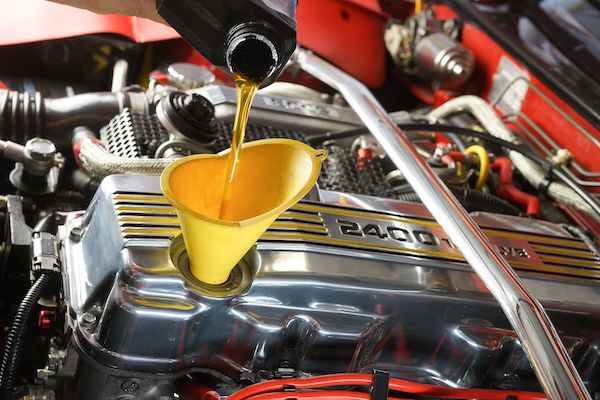
Whenever you bring your car, SUV, or truck to the local professionals at Worth It Automotive in Cordova, TN, you are most likely going to be asked. “What kind of oil?”. If you aren’t sure what kind of oil your vehicle takes, our technicians will gladly look that information up for you. The most important step of oil change services is putting the right oil in your engine. You can find what engine oil your automaker recommends by looking in the owner’s manual. There are two main types of oil: conventional and synthetic. Conventional oil Conventional oil is the traditional or regular type of motor oil, made of crude oil, that has been around for decades. It has the right viscosity, fluidity, and heat resistance to work well in many vehicles. Cars with more than 75,000-100,000 miles on them should opt for the subcategory of conventional oil called high-mileage oil. This type of oil has a lower price point than synthetic oil but doesn’t last as long between changes. You should aim to have your oil changed every 3,000 miles with this kind of oil. Synthetic oil Synthetic oil is engineered with synthetic chemical compounds and additives to be more consistent and beneficial for today’s modern engine. It can withstand extreme temperatures, higher and lower than traditional oil. Synthetic oils also have cleaning properties that can keep your engine free of corrosion. This type of oil is more common in urban vehicles more recent engine designs. The selling point of synthetic oil is that it can last a lot longer in between oil changes, which is why most people tend to disregard the higher price point. Some engines can go longer than 5,000-7,500 miles between each service. You should always follow your car manufacturer’s directions on when to change your oil and what oil to use. If you would like to schedule an oil change with us or discuss anything else related to oil changes, please give our auto repair shop a call today! We look forward to seeing you at Worth It Automotive.
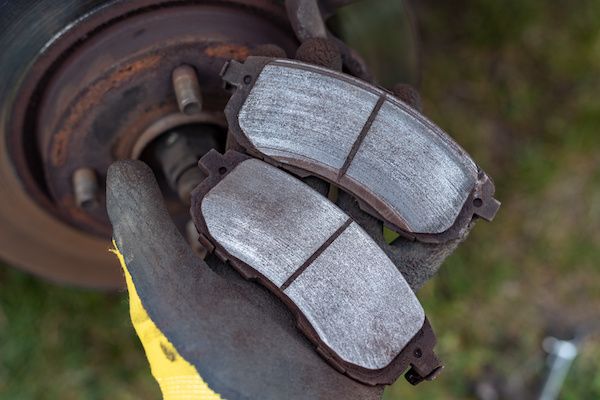
Your first defense in preventing car crashes is the brakes. But, the constant pressure aided by the hydraulic fluid causes wears and tear over time, requiring replacement. So when should you replace them? Signs Your Brake Pads Need Replacement It's vital to ensure your brakes are always in excellent condition. Generally, replacing your brake pads every 10,000 to 20,000 miles and rotors 50,000 to 70,000 miles is recommended. But, if you are unsure of the mileage, consider these signs and indicators of brake pads needing replacement. Vibrations A common sign is vibrations when you apply brakes. Check if the vibration is also felt in the steering wheel. This indicates your pads are worn, and the rotors are exposed to more heat. Screeching Sound Screeching is the easiest indicator of brake pads needing replacement. When you hear a high screech as you slow down, it's a sign of worn brakes. Grumbling Sound This type of sound usually follows after the screeching noise stops. So if your car begins to give a grumpy noise, your brake pads are completely worn out and require immediate replacement. Determinants of Brake Pads Lifespan The following factors determine your brake's lifespan. Environment If you drive in the city, you apply brakes more frequently due to traffic than in the countryside. This means brake pads in city-driven vehicles wear out fast. Also, driving in mountainous regions or areas with steep elevations wears brake pads quickly due to constant braking, especially downhill. Brake Pad Material The makeup material also determines your brake's durability. For instance, carbon ceramic brakes common in high-performance cars are more durable than standard metal types. Hardness Different driving needs have varying brake needs. Soft brake pads work better at low speeds, particularly in cities, while hard compounds last longer and are common in performance vehicles. Driving habits If you drive at top speeds and abruptly stop, your brakes will wear faster than smooth, gradual braking. It's vital at the recommended speeds. If you have noticed these signs and indicators in your car and need brake repair, please we invite you to come by Worth It Automotive today.
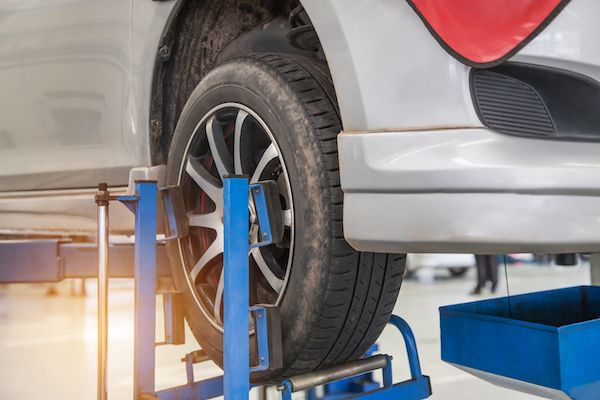
If you care about how much you spend on your vehicle and its tires, then you should consider rotating your tires at regular intervals. This simple service can ensure your tires wear evenly and promote better traction and handling. There’s no catch to tire rotations at all! Read on to learn more about how often you should be having this service performed. About 7,500 miles, give or take. This is how often you should be getting tire rotations. Most vehicle manufacturers recommend having it done sooner or later, so it is best to refer to your owner’s manual for detailed instructions. Most drivers tend to get it done at every oil change to save themselves from having to remember both. During a tire rotation service at Worth It Automotive, we remove your tires, swap their positions, and remount them. Most car tires wear faster in the front versus the back, so switching their positions every so often will ensure they wear down at the same rate. Not only will you save money on having to replace tires as often, but you’ll also have peace of mind knowing that your drive will be safer. It has been proven that tire rotations can reduce the risks of other tire problems, like blowouts. Tire rotations also improve traction and boost fuel efficiency. With even tires, your car can grip the road better and require less energy to roll. If you want your vehicle to perform well throughout the year, make sure you don’t skip out on this service. If you’re ready to have them rotated, please call or visit the tire experts at Worth It Automotive today! Feel free to schedule your appointment online at your convenience.
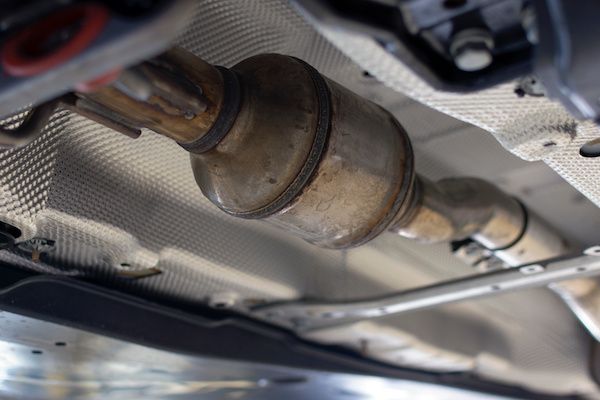
A catalytic converter is an essential emissions control device in a vehicle. It helps to convert harmful gasses into less harmful ones before they are released into the atmosphere. A bad catalytic converter can cause several problems, including engine performance issues and increased emissions. Symptoms of a Bad Catalytic Converter A few different symptoms can indicate that a catalytic converter is going wrong or has already failed. The following are some of the most common symptoms: 1. Reduced engine performance. One of the first symptoms that may be noticed is a reduction in engine power. The engine may feel like it's "working harder" than usual and may not have the same amount of pep. A restriction can cause this in the exhaust flow due to the build-up of debris in the catalytic converter. 2. Increased emissions. Another symptom of a bad catalytic converter is increased emissions from the vehicle's exhaust. The converter may not be able to properly convert the harmful gasses into less harmful ones, resulting in more pollution being released into the atmosphere. 3. Check engine light. Sometimes, a bad catalytic converter may trigger the "check engine" light on the dash. This can be caused by many different things, including a faulty oxygen sensor or a restriction in the exhaust flow. 4. Bad fuel economy. A final symptom that may be noticed is a decrease in fuel economy. Since the engine works harder, it will use more fuel to maintain the same power level. This can lead to an increase in fuel costs over time. 5. "Rotten egg" smell. In some cases, a bad catalytic converter can cause a sulfur or "rotten egg" smell to come from the vehicle's exhaust. This is caused by the build-up of sulfurous gasses in the converter that is not being correctly converted. 6. Overheating engine. Another symptom of a bad catalytic converter is an overheating engine. This can be caused by a restriction in the exhaust flow that prevents heat from escaping. The extra heat can build up and cause damage to the engine. If you notice any of these symptoms, it's essential to have your vehicle checked out by our auto repair shop as soon as possible. We can diagnose the problem and make the necessary repairs to get your car running smoothly again.
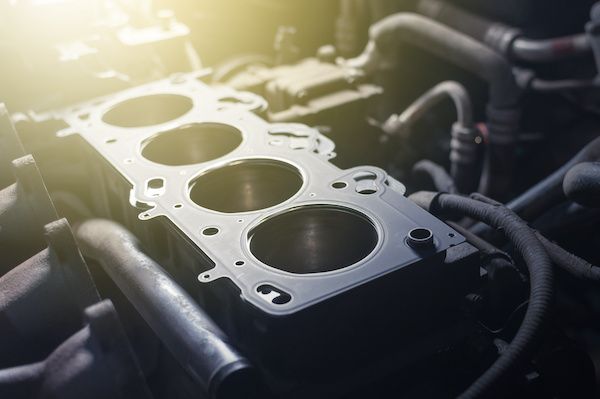
What is a Head Gasket Leak? Few things are as stressful as car problems. A head gasket is a key component of your car. The engine has two sections, the cylinder block (pistons, cylinders, spark plugs, camshaft, and valves between these two parts lies the head gasket. What does a Head Gasket do? Your car needs a head gasket to catch and contain stress emitted when the cylinder's fire. The head gasket stops oil and refrigerant from leaking into delicate parts of the automobile engine. Consequently, the head gasket has to tolerate all the cylinder's pressure caused by expansion, contraction, rubbing, and lots of other rough contact. What Causes a Head Gasket Leak? A vehicle's engine produces high heat levels. An engine overheats and the tension placed on the head gasket can be more than it can handle causing a blown head gasket. The intense heat forces the engine block and cylinder head to rapidly swell and the head gasket is broken. Another potential cause of a head gasket leak is when there's damage to the fire rings and armors, these parts detonate allowing more pressure to reach the head gasket. Warning Signs Your Head Gasket is in Trouble Once coolant breaches from the cylinder accessing the gasket you'll find these symptoms: Boiling fluids in the coolant reservoir Bubbling water in the radiator Opaque, white color in the oil Coolant evaporation without any explanation White smoke emitted from the tailpipe Your engine overheats Oil or coolant around the head gasket Loss of horsepower in your engine Danger If you notice any of these warning signs, don't drive your car. The cooling system might be highly pressurized which can be dangerous. Get your vehicle to an expert as soon as possible. Make sure they follow the manufacturer's guidelines in any repair. The best way you can prevent a head gasket leak is to ensure there's always enough coolant in your engine. Get a regular oil change and checkup every few thousand miles. We specialize in head gasket repair and if you need a dependable, affordable repair call or visit Worth It Automotive in Cordova, TN away!

Summer is a fantastic time to get out on the road and have some fun. There are many sites to visit, whether you're traveling to another state or simply looking for a local campsite. In any case, the extreme heat of the summer months must be taken into consideration. Here are some things to remember before the weather gets too hot so you can drive with confidence. Replace your oil and oil filter. This is especially crucial if you haven't changed your oil in a while, because extreme weather (wet, hot, or cold) can put extra strain on your oil and oil filter. Your oil keeps your engine parts lubricated, while the filter keeps hazardous debris, dirt, and metal fragments out of the oil system. More material is picked up when the filter is clean. The more stuff that is taken up, the cleaner the oil will be. A healthier, happier engine means cleaner oil! Check your tires. According to M ichelin Tires, the penny test is a quick and straightforward way to check for wear. Simply take an Abraham Lincoln coin and follow three simple steps: Using your thumb and fingers, hold Abe's body between your thumb and forefinger on a penny. Place the coin with Abe's head into one of the tire grooves where the tread looks to be the thinnest. You're driving with the legal and safe amount of tread if any part of Lincoln's head is covered by the tread. Your car's ability to grip the road in bad weather is substantially decreased if your tread goes below that (about 2/32 of an inch). Make sure the air conditioner is working. If the air conditioner cools but not to the desired level, the issue could simply be a lack of pressure. This would only necessitate the refrigerant being refilled. Overfilling the refrigerant, on the other hand, may have the unintended consequence of lowering the operation of your car's air conditioning system and possibly blowing the compressor. Bad switches, blown fuses, a shortage of compressor oil, a damaged belt, noisy compressor bearings, and a faulty clutch plate are some additional issues that could be affecting the performance of your car's air conditioning system. Check to see if everything is in order. If you discover any problems, it's a good idea to have them rectified by professionals. Check all exterior lights. Checking your car's lights will just take a couple of minutes of your effort, but it could save your life or the life of someone else! The following should be checked by getting inside the vehicle, and using the relevant lights, alongside someone confirming the working condition of each of the lights from the outside the vehicle: Check the sidelights. Check the headlights, both the dipped and the main beam. Check your fog lights. Check your indicators. Check your hazard warning lights. Check your brake lights. Bring your vehicle to our shop! If you need assistance getting your vehicle ready for the summer months ahead, we invite you to bring your vehicle to Worth It Automotive today!
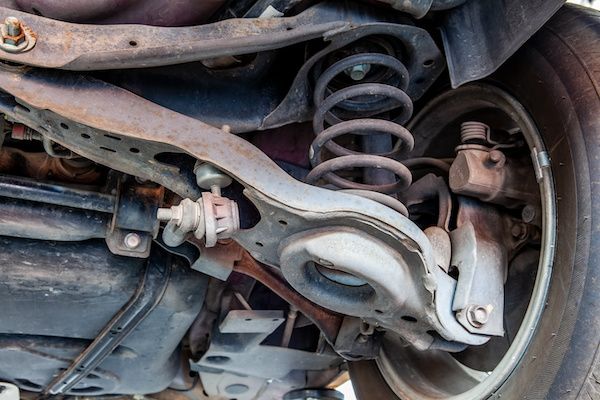
Shocks and struts work together to provide smooth driving. Shock absorbers help reduce vibration and noise. Struts help distribute weight evenly over the wheels. People don't know the importance of replacing shocks and struts when they wear out. Read more here! What Is Shocks and Struts Shocks and struts are two essential parts of a vehicle. They are responsible for absorbing shock and preventing damage to the wheels. What exactly are they? Shocks absorb energy from bumps or potholes in the road. The springs inside them allow the suspension system to move freely without causing excessive wear. Struts are located at each wheel and connect the axle to the body. They provide lateral support to the chassis and prevent the tires from slipping sideways. Shock absorbers are mounted at each wheel to reduce the impact force transmitted through the wheels. Struts are between the frame rails and the body to provide lateral support. They play a vital role in protecting the vehicle against damage caused by rough roads. What Is Their Purpose Within a Vehicle A shock absorber is a device that absorbs the energy of a movement or force. Its purpose is to reduce the effects of vibrations and shocks by absorbing mechanical energy and converting it into heat. Vehicle suspensions are designed with shocks and struts to provide a comfortable ride for passengers and maintain vehicle stability. A strut is an element in a suspension that connects the wheel hub to the vehicle's body. It allows for vertical motion, primarily in response to forces from wheel loads, but also from lateral forces such as braking or acceleration. Symptoms That Can Indicate Shocks and Struts When a shock or strut is worn, it can cause the vehicle to shudder, vibrate, and make noise. It is usually due to a loss of control over the suspension system. Signs of worn shocks and strut include: A loud noise when driving over bumps. A squeaky sound when turning the steering wheel. A loss of power. A loss of control. A loss of braking ability. A loss of traction. A loss of handling. Signs of worn shocks and struts in your car come in many forms. If you need your shocks or struts replaced, we invite you to bring your vehicle into our auto repair shop today!
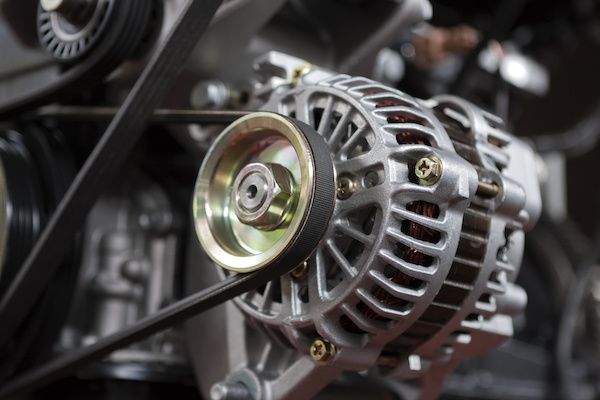
A car's alternator plays a similar role to a generator as it creates electrical energy that power's the electrical components. It attaches to the engine via a belt, transforming mechanical energy into electrical energy by generating AC power through electromagnetism. Generally, alternators have a lifespan of 7 to 10 years, but they may become defective before then. Here are some signs indicating that the alternator is faulty or is beginning to fail. The Battery Light Is On The On-Board Diagnostics (OBD) system may communicate any mechanical or electrical system problem the car is experiencing. It relays the information through light indicators on the dashboard. For instance, you may notice a red battery-shaped light on the dash. Or perhaps it's the illuminated letters GEN or ALT. No matter the case, it's time to check the alternator. Malfunctions of Electrical Components The alternator powers the electrical components in a car. When it starts to fail, you might notice some parts functioning at minimal capacity. Some common signs include dimming dashboard lights and flickering headlights. Also, electric-powered accessories like the power windows, windshield wipers, and electronic seats may lag and operate slower than usual. Whining Sounds The alternator comprises small components which spin to generate electrical energy. When any part fails, such as a worn-out bearing, it can result in a whining or grinding sound. Consider scheduling an auto repair check to scrutinize the alternator whenever you hear weird sounds from the front of your car. It might be time to replace a component. Burnt Rubber Smell The alternator runs courtesy of belts and pulleys linked to the engine. You may notice a burnt rubber smell from the hood at some point. That could mean the belts aren't turning freely, and the increased friction is causing them to heat up and burn. A belt could also slip on the alternator's pulley and cause a smell like that of an electrical fire. While tightening the belt could do the trick, the odor may persist. In that case, you may be looking at failing alternator bearings. It would be wise to get the help of a skilled technician to diagnose and fix the problem. A Weak Battery Another possible indicator of a failing alternator is a weak battery. While the alternator's work is to maintain the battery's charge, it may not do much if the battery is weak or dead. But how can you tell which of the two is at fault? By jump-starting the car and removing the jumper cables. If the alternator is at fault, it won't charge the system, and the car will turn off by itself. But if the vehicle continues to run, the battery might be faulty. The Bottom Line Failing to repair a faulty alternator can lead to a dead battery, causing the vehicle not to run. It would be prudent to get the help of an auto repair technician for prompt service. We invite you to bring your vehicle to Worth It Automotive today if you need alternator repair.
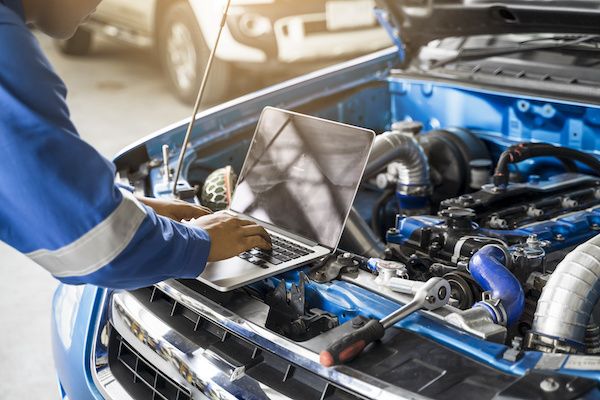
Annual diagnostic tests can help you detect problems with your vehicle before they worsen or leave you stranded on the side of the road. While many diagnostic tests are necessary when a check engine light comes on your dash, there are other benefits to getting it done with or without a warning indicator. The computerization of your vehicle and its many components is the most significant advancement in the industry. We can quickly and accurately point to a problem with the proper skill sets and state-of-the-art diagnostic tools. All thanks to built-in processors, microchips, and sensors. Computerized diagnostics tests can uncover problems within a car's engine, transmission, exhaust system, brakes, etc. The reality is that error codes only point a mechanic in the right direction of the problem; they do not detail the cause of the issues. That's where your mechanic's expertise comes in to diagnose the underlying problem. Before diagnostic tests, some problems took a lot of time to locate. Fortunately, many cars sensors can detect problems long before they can cause a breakdown. Therefore, you don't have to wait for the check engine light to come on before getting a diagnostics test. If you feel something "off" with your vehicle, you can take your car to a trusted auto repair shop for diagnostic testing. Diagnostic testing is also a helpful method when you're looking to buy a used car. When you bring in a car for a pre-purchase inspection, we'll hook it up to a scan tool to uncover underlying issues. Worth It Automotive is your trusted source for expert diagnostic testing and other auto services. We can accurately inspect your cars and only recommend services needed to protect your vehicle. Please give us a call or visit if you need computer diagnostics soon.
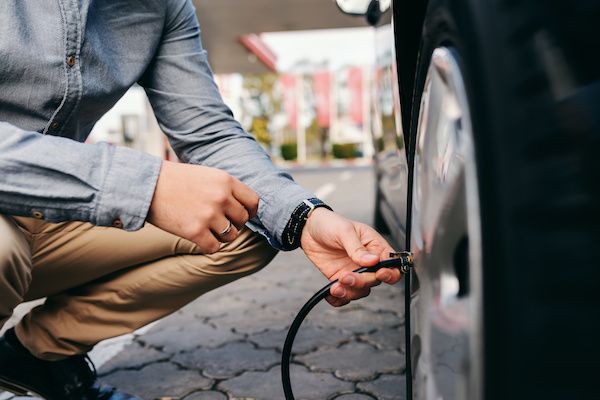
Everybody always talks about and emphasizes the importance of checking your tires. But it can be difficult to start this habit if you don't know what to look for. There are three things to check when it comes to your tires: tread depth, air pressure, and sidewalls. Before we get into the details of the three items you should be checking off, you need to understand the importance of your tires. Your tires are necessary to deliver you with a safe, comfortable, and reliable driving experience. They are the only part of your car that makes contact with the road, so that in itself is very telling of how important they are. All in all, your tires help you to accelerate, brake, and maintain control of your vehicle. While healthy tires can help you with all those things, bad tires can do the opposite, which can result in poor gas mileage and spending more money on repairs by spreading damages to your alignment, suspension, balance, and brakes. Tens of thousands of vehicle accidents and injuries occur from tire failure (worn-out tire tread, under-inflated tires, and blowouts) every year. To prevent you from contributing to this statistic, we highly encourage you to take time to properly inspect your tires. You should check the following at least once a month. Tread Depth Tread depth tells you whether your tires are gaining proper traction with the road. To be considered safe and legal, your tires should have more than 2/32 of an inch left on the ridges. To check the tread depth, you can simply use a penny if you don't have any fancy tools lying around. Start by placing the penny into the tire groove. If you can see the top of Lincoln’s head, it means that your tread is too low and you need new tires. If his head is covered, it means you still have enough tread. Tire Pressure Proper inflation is also key to tire health. The recommended PSI for your car's tires is usually listed inside the driver’s door jamb or your vehicle’s owner manual. Tire pressure is so critical to check frequently because the air in your tire can expand and contract according to the temperature outside. Maintaining the right tire pressure throughout the seasons will keep you safer on the road as it minimizes the risk of a blowout and enables them to wear evenly. Sidewalls Last but not least, you should check your tire sidewalls for signs of damage (bulges, cracking, scrapes, and gouges). While some damages are repairable, bulges and cracking usually necessitate a tire replacement. If your tires are worn or damaged, please bring your car to the tire experts at our auto repair shop in Cordova, TN. Our team will help you get the repairs or replacements you need so that you can be back on the road safe again.
